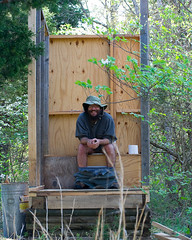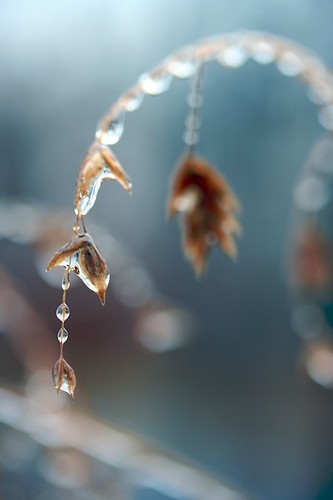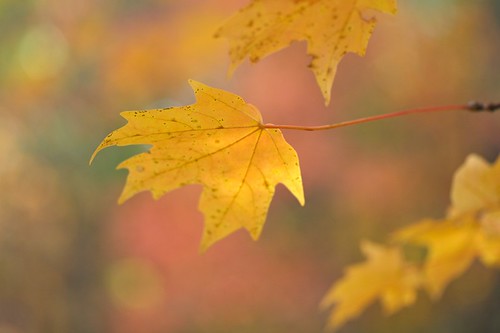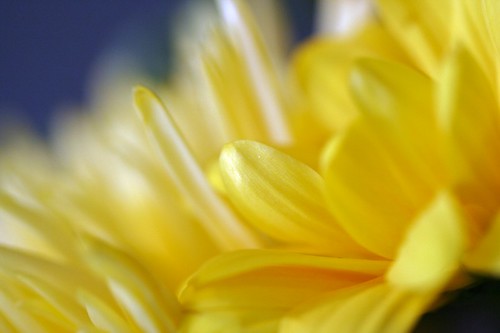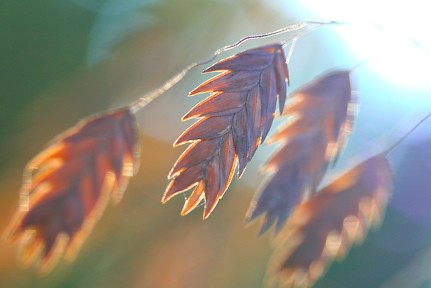Nature
Orphaned Fawn
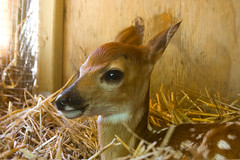 Meet the newest resident at the permaculture homestead. Saturday morning my friends Karen and David were using a tractor in one of their fields and came upon this little fawn who ran to a nearby creek and then jumped from a rock ledge into the water eight feet below. David used a chain to rappel down to the water and retrieve her. By the time they got her back to the field she had been handled by the both of them and they were afraid to leave her alone for fear that her mother might not take her back due to any left over human scent. They left her in the care of friends but as it turned out those folks were not able to keep her so they brought her here just before sunset.
Meet the newest resident at the permaculture homestead. Saturday morning my friends Karen and David were using a tractor in one of their fields and came upon this little fawn who ran to a nearby creek and then jumped from a rock ledge into the water eight feet below. David used a chain to rappel down to the water and retrieve her. By the time they got her back to the field she had been handled by the both of them and they were afraid to leave her alone for fear that her mother might not take her back due to any left over human scent. They left her in the care of friends but as it turned out those folks were not able to keep her so they brought her here just before sunset.
She was pretty freaked out as you could imagine. As of late afternoon Sunday she was settled down and fairly calm and starting to drink the formula for baby goats which also works for deer. It goes without saying that she is quite adorable. This morning after feeding she nuzzled up under my beard between my neck and chin and let out a series of squeeks. That’s a moment I will never forget. I could get used to this.
Garden a'growin
With the recent rain and now very warm weather the garden is really coming alive. The tomatoes have not looked very good due to the flooded soil but now that we’ve gotten a bit of a lull they are perking up and starting to look pretty good. I’ve got four different kinds of basil coming up as well as zinnias and cosmos. Squash and melons are now planted around the corn bed. Sweet potatoes are in as well. I still need to plant more squash and cukes as well but things are moving along. Oh, and I’ve got all of the comfreys from the initial planting out around the fruit trees.
Zebra Swallowtail
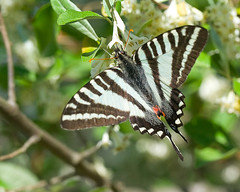 I’ve been seeing these around but usually while I’m working, hands dirty and no camera around. Went out this morning to work on the path to the kiwi arbor in the food forest and saw one nectaring from the Autumn Olive so I grabbed the camera and got a few shots.
I’ve been seeing these around but usually while I’m working, hands dirty and no camera around. Went out this morning to work on the path to the kiwi arbor in the food forest and saw one nectaring from the Autumn Olive so I grabbed the camera and got a few shots.
Food Forest and Garden Update
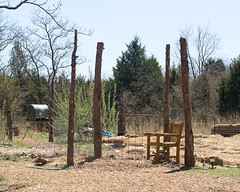 I’ve got seedlings everywhere: 70 tomatoes of 5 varieties, 40 peppers of 5 varieties, 70 eggplant of 5 varieties and 22 comfrey. The remaining cabbage, broccoli and kohlrabi, about 40 plants total, will be getting transplanted into the garden tomorrow. The peas and fava beans are all up as are lettuce, radish, spinach, kale and a few others. The garden expansion is all fenced in and about 80% mulched with cardboard and straw. I’ll finish it off as soon as I get more cardboard. Thanks to Karen and David we have something like 25 straw bales for the rest of the mulching and for use in the chicken coop.
I’ve got seedlings everywhere: 70 tomatoes of 5 varieties, 40 peppers of 5 varieties, 70 eggplant of 5 varieties and 22 comfrey. The remaining cabbage, broccoli and kohlrabi, about 40 plants total, will be getting transplanted into the garden tomorrow. The peas and fava beans are all up as are lettuce, radish, spinach, kale and a few others. The garden expansion is all fenced in and about 80% mulched with cardboard and straw. I’ll finish it off as soon as I get more cardboard. Thanks to Karen and David we have something like 25 straw bales for the rest of the mulching and for use in the chicken coop.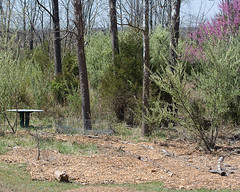 The four Hardy Kiwi vines are planted though two will be getting moved this week as I put them too close together. Two will remain at the arbor at the entrance of the kitchen garden and the other two will go into the food forest, planted on a trellis between the established sycamore trees. I also picked up 6 blueberries but they are not all that healthy as they were not watered in the store. I’ve put them in pots and if they do survive they’ll be going into the food forest.
The four Hardy Kiwi vines are planted though two will be getting moved this week as I put them too close together. Two will remain at the arbor at the entrance of the kitchen garden and the other two will go into the food forest, planted on a trellis between the established sycamore trees. I also picked up 6 blueberries but they are not all that healthy as they were not watered in the store. I’ve put them in pots and if they do survive they’ll be going into the food forest.
I also put up a small, 2 foot high fence around the keyhole beds near my cabin to keep the rabbits from snacking every night. I’d rather not have fences everywhere but the rabbits are many and they are apparently very hungry. Last, the lake front area has been cleaned up a good bit. We’d cut the tornado trees all up last fall and I’ve cleared out all the small branches and twigs and have created a bit of lakeside lawn. If it is up to me that is the only lawn we’ll have in any of the common areas!
So, a good bit of progress even with all the rain and cold. A week of warmth and I imagine everything will start to pop into action.
The Sunset Party
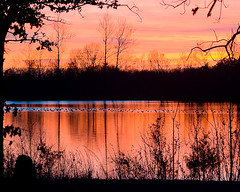 Fantastic color last night. We’ve had more and more ducks showing up day-to-day. For a week there were maybe 5 and then 10 and suddenly there were 200 or more out there. They’re not close enough to get a good look but no matter, I’m just glad they are out there. Now that spring has come the nights are filled with frog song. I’m surrounded by this amazing life force… all of these beautiful creatures with their many voices. Yup, it’s a party.
Fantastic color last night. We’ve had more and more ducks showing up day-to-day. For a week there were maybe 5 and then 10 and suddenly there were 200 or more out there. They’re not close enough to get a good look but no matter, I’m just glad they are out there. Now that spring has come the nights are filled with frog song. I’m surrounded by this amazing life force… all of these beautiful creatures with their many voices. Yup, it’s a party.
Spring Garden Updates
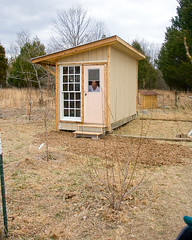 Lots of progress this past week. The tomatoes have all come up and will be transplanted into a variety of re-used plastic containers tonight. The broccoli and cabbage have all been planted out to the garden. A row of sugar snap peas is planted along the garden fence with another row going in this week. More cardboard and straw has been put down into the new garden expansion.
Lots of progress this past week. The tomatoes have all come up and will be transplanted into a variety of re-used plastic containers tonight. The broccoli and cabbage have all been planted out to the garden. A row of sugar snap peas is planted along the garden fence with another row going in this week. More cardboard and straw has been put down into the new garden expansion.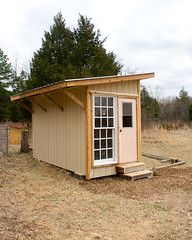 The chicken coop is 95% finished. We’ve got the walls and roof finished and the laying boxes built in. Left to do is to put in the east facing door and a chicken wire wall on the inside to separate the chickens from a small area for feed storage. Last is to paint it and move the chickens in! Hopefully we’ll get the greenhouse started the next time Greg comes down.
The chicken coop is 95% finished. We’ve got the walls and roof finished and the laying boxes built in. Left to do is to put in the east facing door and a chicken wire wall on the inside to separate the chickens from a small area for feed storage. Last is to paint it and move the chickens in! Hopefully we’ll get the greenhouse started the next time Greg comes down.
Upcoming tasks: Move the compost fifteen feet just outside the garden area; finish cardboard/straw mulching in the new garden area; plant potatoes; start peppers, basil, comfrey and a few other things in seed flats; mulch in a few new paths around the garden and food forest.
A Nice Surprise
 I was out on a walk this morning and discovered this beautiful patch of green along the ground. From a distance I thought it was moss but as I got closer I could see that it was too tall. I’m pretty sure I’ve never seen this before. A really beautiful plant!
I was out on a walk this morning and discovered this beautiful patch of green along the ground. From a distance I thought it was moss but as I got closer I could see that it was too tall. I’m pretty sure I’ve never seen this before. A really beautiful plant!
Edit: The mystery is solved, it is Fan Clubmoss (Lycopodium digitatum)!
Time stands still
 We had a very nice surprise a couple days ago: snow. A light but steady snowfall that began midmorning. Not alot, but just enough to cover the paths and the frozen lake. After enjoying it through the window most of the afternoon I stopped resisting the urge and took Talula out for a short walk. I wanted to go half way around the lake so that I could take a picture looking back across the lake at the cabin.
We had a very nice surprise a couple days ago: snow. A light but steady snowfall that began midmorning. Not alot, but just enough to cover the paths and the frozen lake. After enjoying it through the window most of the afternoon I stopped resisting the urge and took Talula out for a short walk. I wanted to go half way around the lake so that I could take a picture looking back across the lake at the cabin.
The birds were, of course, very busy as they often are during snow fall. The usual cast of characters could be seen or heard as they went about their business of food gathering. While I love and appreciate them all, it is always the plain and simple Juncos that seem to bring the biggest smile to my face. I’m not sure why. Just a few hundred feet from the cabin we came across five or six deer that were just a few feet into the woods.
At fifteen degrees it is cold enough that my thin work gloves only seem to keep my fingers warm for a brief few minutes so by the time I’d gotten my photos I was starting to really feel the chill in my hands. I was eager to head back to the warmth of the wood warmed cabin and yesterday’s leftover vegetable soup that I left heating up on the stove. My pace was quick.
I’m not sure what prompted it, but as I walked back I slowed, then stopped under a cluster of cedar trees. I stood still. I looked into the woods and then up into the sky. Time seemed to slow. I was suddenly very aware of each breath. I had the sense that my vision had both widened and narrowed at the same time. I was aware of the larger sky but also of a field of focus just inches above my face in which the crystal structure of each passing snowflake became unbelievably clear. What came next was an amazing sense of calm and my body relaxed. I was warm. I then became aware of this heightened sense of awareness which was comforting and strange.
This is the pure and simple beauty that comes from a life lived in deliberate connection with nature. I’ve had many such moments of awareness before and consider them the most beautiful moments of my life. All of them have happened while I was “outside” in the natural world. I’ve come to believe that these moments can happen every day and with practice that they can become anchor points that deepen our connection, our relation with the living force of the planet all around us.
I suppose such moments are similar to or the same as the daily mindfulness that Buddhists such as Thich Nat Han advocate as a form of moment-to-moment, breath-meditation that leads to an over-all increase in awareness and thus, peacefulness. Based on my own experience I tend to agree with the approach and the result. But a general sense of well being and peacefulness is not the end. It is far more meaningful if combined with the active cultivation of ecologically sustainable human community.
I can’t help but think that the deliberate, cultivated sense of being in the moment, of being connected and aware of the life around us when combined with the meaningful and needed work of social ecological activism can only lead to a more realized and evolved humanity.
Food Forests
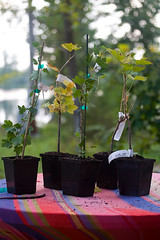 As the summer has begins to move into fall I continue to learn about forest gardening, permaculture, and ecological gardening. Reading a variety of books and websites as well as hands on work in our own gardens, I’m developing a much better understanding of these ideas. I’m no newbie to gardening and have been doing so for the past 20 years, but there’s no doubt that in these past few months I’ve learned a great deal not only about permaculture design but also about the natural processes and systems that our design is meant to mimic.
As the summer has begins to move into fall I continue to learn about forest gardening, permaculture, and ecological gardening. Reading a variety of books and websites as well as hands on work in our own gardens, I’m developing a much better understanding of these ideas. I’m no newbie to gardening and have been doing so for the past 20 years, but there’s no doubt that in these past few months I’ve learned a great deal not only about permaculture design but also about the natural processes and systems that our design is meant to mimic.
The folks over at Edible Forest Gardens offer this somewhat philosophical description of Forest Gardening:
As Masanobu Fukuoka once said, ‘The ultimate goal of farming is not the growing of crops, but the cultivation and perfection of human beings.’ How we garden reflects our worldview. The ultimate goal of forest gardening is not only the growing of crops, but the cultivation and perfection of new ways of seeing, of thinking, and of acting in the world. Forest gardening gives us a visceral experience of ecology in action, teaching us how the planet works and changing our self-perceptions. Forest gardening helps us take our rightful place as part of nature doing nature’s work, rather than as separate entities intervening in and dominating the natural world.
The author of Gaia’s Garden,Toby Hemenway, has this fantastic description of the encounter of western observers of the original food forests:
Until the late 20th century, western anthropologists studying both ancient and current tropical cultures viewed equatorial agriculture as primitive and inefficient. Archeologists thought the methods were incapable of supporting many people, and so believed Central and South America before Columbus—outside of the major civilizations like the Aztec, Maya, and Inca—held only small, scattered villages. Modern anthropologists scouted tropical settlements for crop fields—the supposed hallmark of a sophisticated culture—and, noting them largely absent, pronounced the societies ‘hunter gatherer, with primitive agriculture.’ How ironic that these scientists were making their disdainful judgements while shaded by brilliantly complex food forests crammed with several hundred carefully tended species of multifunctional plants, a system perfectly adapted to permanent settlement in the tropics. It just looks like jungle to the naive eye.
…
The managed forests of the Huastec Maya in northeastern Mexico are packed with up to 300 plant species, including 81 species for food, 33 for construction materials, 200 with medicinal value, and 65 with other uses (the numbers add up to more than 300 since these are multifunctional plants). In these forests, Maya farmers often create different subpatches that concentrate specific guilds of domestic species (such as coffee guilds) amid a background of natives. And all the while, they are tucking small gardens of bananas, chiles, manioc, and other edibles into any clearings. The managed-forest stage may last for 10 to 30 years. Then the cycle begins anew. Since the whole process is rotational, any given area will hold swiddens and fallows at all different phases. This complexity would understandably delude a cornfield-programmed anthropologist into thinking he was looking at raw jungle.
Autumn Olive!!
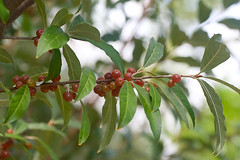 Very cool! We’ve got Autumn Olives (Elaeagnus umbellata) all around here. The downside is that they can be invasive. The upside is that they are an incredibly good bush to have. The red berries are great tasting and highly nutritious consumed raw or cooked. They are nitrogen fixers as well which is, of course, a great contribution to the forest garden. I’m glad I am in the habit of not cutting plants and bushes down until I’ve identified them. I discovered long ago that far too many plants are likely to be useful and that cutting them down without knowing is usually a mistake. My forest gardens just got better and I didn’t have to do a thing!
Very cool! We’ve got Autumn Olives (Elaeagnus umbellata) all around here. The downside is that they can be invasive. The upside is that they are an incredibly good bush to have. The red berries are great tasting and highly nutritious consumed raw or cooked. They are nitrogen fixers as well which is, of course, a great contribution to the forest garden. I’m glad I am in the habit of not cutting plants and bushes down until I’ve identified them. I discovered long ago that far too many plants are likely to be useful and that cutting them down without knowing is usually a mistake. My forest gardens just got better and I didn’t have to do a thing!
Plants for a Future, an excellent plant database, has an entry for Autumn Olive.
Alone in the Woods
Well, not entirely alone. I do have the world’s best dog with me. I also get almost daily visits from various relatives that live about a mile away and visit them as well. I’d say that since moving down here (May 23) I’ve averaged 2 hours a day (during the week) with nearby humans. I’ve also had ten or so weekend visits from my sister and her family as well as a visit from my brother but more than half of the weekends have been just me. So, not entirely alone but mostly alone.
But not lonely. I’m fairly certain that I’m a good fit for this kind of life. It’s not that I like being by myself, just that I don’t mind it… am not freaked out by it as many seem to be. I’ve been single since 2003 and have felt no great need to seek a relationship. I made a decision long ago that I would not have children and I suppose that decision removes one reason for needing a relationship. That said, there certainly are times when I would not mind having a daily partner in life and in some ways I think life would feel more complete or whole that way. But I don’t feel that I need it.
Back around 1990 I read a book, Thinking Like the Mountain, which had a profound effect on my perception of self. I tend to think of self as more than just this body (which is itself more than one organism) or even this named person that has evolved a personality. Self is in flux both physically and mentally. We don’t exist alone. Ever. Alone is a false condition or state of the mind… an emotional feeling. We are in a constant state of physical exchange and connection when we breath, eat, sweat, pee, and poop.
More than that, we have our senses that are tools, with the mind, that enable us to be aware of all the life that surrounds us. As I type this I hear several birds outside my door at various distances and with various songs which are really conversations. I hear a constant song of crickets as a background music. A step out into the garden and I would most likely hear the various bees as they buzz from flower to flower. These sounds are constant and always changing in the spring, summer, and much of the fall. In the winter it grows still but even then the sounds of the wind and chirping of the birds at meal time are steady reminder’s of our planet’s energy and life force.
In addition to the constantly changing conversations coming into my ears I can see what my neighbors are up to. I can watch the orchard spider weave its web or catch its lunch. I can watch the butterfly nectaring from a group of asters. When I walk into my garden I see small frogs and lizards busy in their food search. When I turn the compost I can observe the goings on of crickets, millipedes, centipedes, fungi, earthworms, spiders and countless others. In addition to the animal life I can see the wildflowers, fruit trees, and garden plants as they intertwine with one another and surrounding structures.
Of course it doesn’t stop with hearing and seeing. I can smell and taste too. There is the blended smell of country fresh air full of invisible pollen which is wonderful but hard to describe. There are the specific smells of the various herbs in the spiral garden: mint, thyme, oregano, sage and more. In the woods there are the specific scents of wild rose, sweet william and bee balm among many others. Then of course there is the eating! Wild and garden alike, there are peppery nasturtiums, lemony tart wood sorrel, nutty arugala, sweet bell pepper, juicy peaches… I can harvest and within seconds plop leaves and fruits into my mouth. The energy of the sun and the minerals of the soil synthesized into plants full of vitamins and enzymes enter my body which instantly begins the process of digestion. Of course these foods taste fantastic and often the scent blends with the taste as with the distinctive aroma of living tomato vines and their fruit.
As I forage through the woods and garden I am distinctly aware that not only am I not lonely, I am not alone at all. I am surrounded by life and am a part of it. We humans seem to have forgotten that we are animals too. Homo sapiens are but another species on this planet and to remember that we are animals is to also remember that we belong on this earth, evolved from it and are nurtured by it. We are of it in millions of years of ongoing evolutionary process as well as daily life processes. Our bodies are earth and the connection is inseparable.
Alone in the woods? Not at all. I am alive in the woods.
Walking, gardening, and eating catfish
A slow day today. Started off with the usual green tea with chocolate mint from the garden and a breakfast of peanut butter and strawberry preserves. I don’t have (and don’t want to use) a refrigerator so I’ve been eating a streak of these sandwiches so that I can finish off the preserves before they start to mold. I keep the jar in a small cooler with a bit of well water which keeps it fairly cool on hot days and I’ll probably dig a small, improvised root cellar which is a 4 foot hole dug in a shady area with a well sealed container placed inside it. When I start canning my own I’ll make a point of using the smallest possible jar for that reason. Eventually we’ll put in a proper root cellar too.
After breakfast I took a walk with the excellent medicinal plant book, Peterson Field Guide: Eastern/Central Medicinal Plants and Herbs. We’re surrounded by food and medicine, we just have to know which plants are good for what as well as what parts of the plant and how to prepare. I’ve started learning and will also start harvesting for winter and out of season use. I think I’ll be starting with Mullein and Wild Rose hips. The Mullein leaves and flowers can be harvested for use in tea as an expectorant, demulcent, anti-spasmodic, and diuretic which can be useful in treating chest colds, bronchitis, asthma, coughs, and kidney infections. A word of caution though, the leaves contain rotenone and coumarin and should be used with caution. The rose hips are the little red fruits after flowering and can be made into a tea very high in vitamin C, I’ll probably mix that with mint from the garden. I’m no longer drinking orange juice so that will make a nice supplement to my diet.
The half-way point of my walk was a visit to the grandparents. As is almost always the case granny offered food: grilled cheese and potato salad. A very tasty treat! I also retrieved a bag of frozen catfish* for dinner. Freezing fish is likely the only thing I’ll be needing a freezer for so I’ll just borrow a bit of space since it won’t be much. I’ve got three relatives all within walking distance so I can spread it out if I end up having a lot. I’m thinking I also need to learn how to smoke fish for longer term storage though I’m not sure how long it can be stored even when smoked. The best thing would be to eat it fresh but when it is cold and the lake is frozen that will not likely be an option.
After the walk and before eating the catfish I worked a bit on preparing a couple of new keyhole beds in the zone 1** garden of annual veggies just outside my cabin door. Back in 60s-90s this land was used as a hunting and fishing club so there were little weekend trailers scattered about and my cabin sits on one of those sites which means it sits on a bed of gravel and rock. Fun, fun. I’ll be raking and digging that rock out into a thin path from the door to the road. The site has been unused for at least a decade which means there’s a nice layer of composted leaves built up which I’m separating out from the rock. The resulting beds will initially be planted with lettuce, spinach, carrots, and radishes for a late summer and fall crop.
*Folks that know me personally probably know that I’ve been a vegetarian for 20 years and may be wondering why I’m eating catfish. A big part of my decision to become a vegetarian was based on the energy aspects of diet. It generally takes less energy to eat a plant only diet. Another aspect of the energy equation is transport and there are other concerns such as whether the food is being exported from a country where people do not have enough food due to the production of cash crops for export. When I decided to move here to create a life based on permaculture principles I knew that it also meant that I would begin harvesting the mature fish from the lake. It is an excellent protein source which is available in great abundance within 100 yards of my front door.
**For folks new to permaculture, when a site is designed it is viewed as zones. The house or living structure is Zone 0 and the area immediately outside the doorways is Zone 1. This is the area most often and conveniently accessed so this is where we try to plant the annual vegetables that need the most attention and which are likely to get harvested often.
Humanure!!
We've started our permaculture project!! Our site is about 110 miles south of St. Louis, Missouri on about 300 acres total with a lake. We'll be using just a few acres, probably less than 5 to start with.
We spent the first weekend of work accomplishing our first goal: building an outhouse for collecting human manure for composting. When this picture was taken we were one day into the project. 95% of the materials used were recycled from abandoned or tornado damaged structures. The only thing we purchased was a bit of siding and roofing material.
We'll also add a gutter and rain barrel for collecting rain water for washing hands. The structure is nestled in with a few cedar and dogwood trees so a good bit of shade. My current plan is to mound up large creek rocks near the treated wood base and then soil further out from the rock and plant with a variety of shade wildflowers like Sweet Willam.
A note about permaculture and composting human waste. For a lot of folks the subject of human waste is taboo. From the perspective of permaculture, it is what it is: the natural by-product of human life which can and should be recycled back into the local ecosystem. We won't be spreading this raw manure onto crops because it does indeed contain a variety of bacteria that should not be near food. A five gallon bucket is used to collect the manure and it is then composted in a special long-term compost pile for 2-4 years to ensure that it is safe to use. In all likelihood it will be used for fruit and nut trees, berry vines, and bushes in our forest garden.
Next on the project list: Utility shed and after that a series of small cabins. Some family will be using cabins for vacationing initially with plans for longer term residence later. I'll likely be living on-site much of the year starting in the fall. Composting has already begun and the garden as well as forest garden will be developed in stages starting this fall. Spring of 09 will be focused on the full development of the garden as well as a new chicken coop for 5-10 chickens and a bee hive.
This is just the beginning of our project but given the general state of energy and climate change on the planet, I'm glad to have it started. I have no doubt that peak oil has arrived and, as fate would have it, the effects of climate change seem to be rapidly accelerating at the same time. It is well past the time that we begin building local communities of people willing to see a life beyond suburbia.
Sharp-shinned Hawk
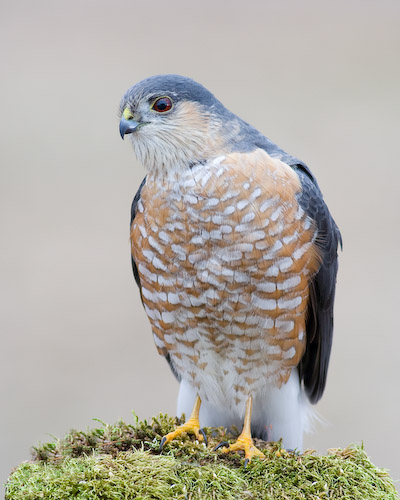
This Sharp-shinned Hawk landed on one of the perches in my feeding area… maybe 15 feet away. Beautiful bird and my first chance to photograph a bird of prey. After landing he just calmly looked around for some dinner, maybe 40 seconds and then flew away. I must say, he is welcome back anytime!! I was stunned by his presence and keep replaying the moment in my mind because it did not seem real. I think this visit made my year!!
Growing Native
My first YouTube video, an export of a Keynote presentation about growing a native wildflower garden for habitat. An excellent way to reduce usage of water and fossil fuels by replacing grass with plants that are native to an area and better suited to that environment. No need for fertilization and less use of water after seedlings are established because the plants are usually satisfied by normal rainfall.
Fall Light
This was taken a few weeks ago. There's no doubt that the fall weather was very late to arrive this year. We had mostly green leaves on trees up to the end of October. I suspect we will see very little snow this winter just as we've seen very little in the past four... far less than in years past. It is way too warm.
Summer Ends
It seems that fall may finally be arriving with a bit of cool weather. As I write this 95% of our trees are still very green. It's October 10th and we're just beginning to see fall color. The past few weeks have seen most days into the low 90s or upper 80s. Scary.
Like much of the midwest and southeast we've had a summer of severe drought so I'm doubtful that we'll have as much color as we've had in other years.
An eco-friendly way of dealing with fall leaves
Four years ago I moved from the big city to five acres in the country. I soon discovered that many country folk have a nasty fall habit: they burn their leaves. At least in this part of the country it seems to be the universal method for fall yard maintenance. Given the current state of climate change burning leaves is a real no-no. As an avid gardener I’ve always made it a point to compost leaves so that all that organic matter is returned to the soil which completes the natural cycle.
Here is a tip for more easily managing fall leaves that is based on moving them rather than burning them. If you’ve got a big yard in a rural setting chances are you have a place where you can store a big pile of leaves for the winter so that they have a chance to decompose and not be in your way. The method is simple and requires a tarp and a rake. If you’ve got two people a bigger tarp will work better. Simply lay the tarp down and rake the leaves onto it. When you’ve got a huge pile fold the tarp over forming a big leaf taco and drag it to your compost or out of the way area. Repeat until finished. That’s it. You’ll get some exercise and will add zero emissions to the atmosphere.
Using this method is as fast as burning and much faster than bagging leaves or raking them into a wheel barrow. It may not be as fast as one of those fancy lawnmower-based leaf mulcher/vacuums but it produces zero pollution. Gas mowers are terribly inefficient at burning gas and produce gobs of CO2 (Carbon dioxide), much more than a car, because they do nothing with the emissions produced… they just spit it all out. So the gas mower/vacuum method should be avoided.
